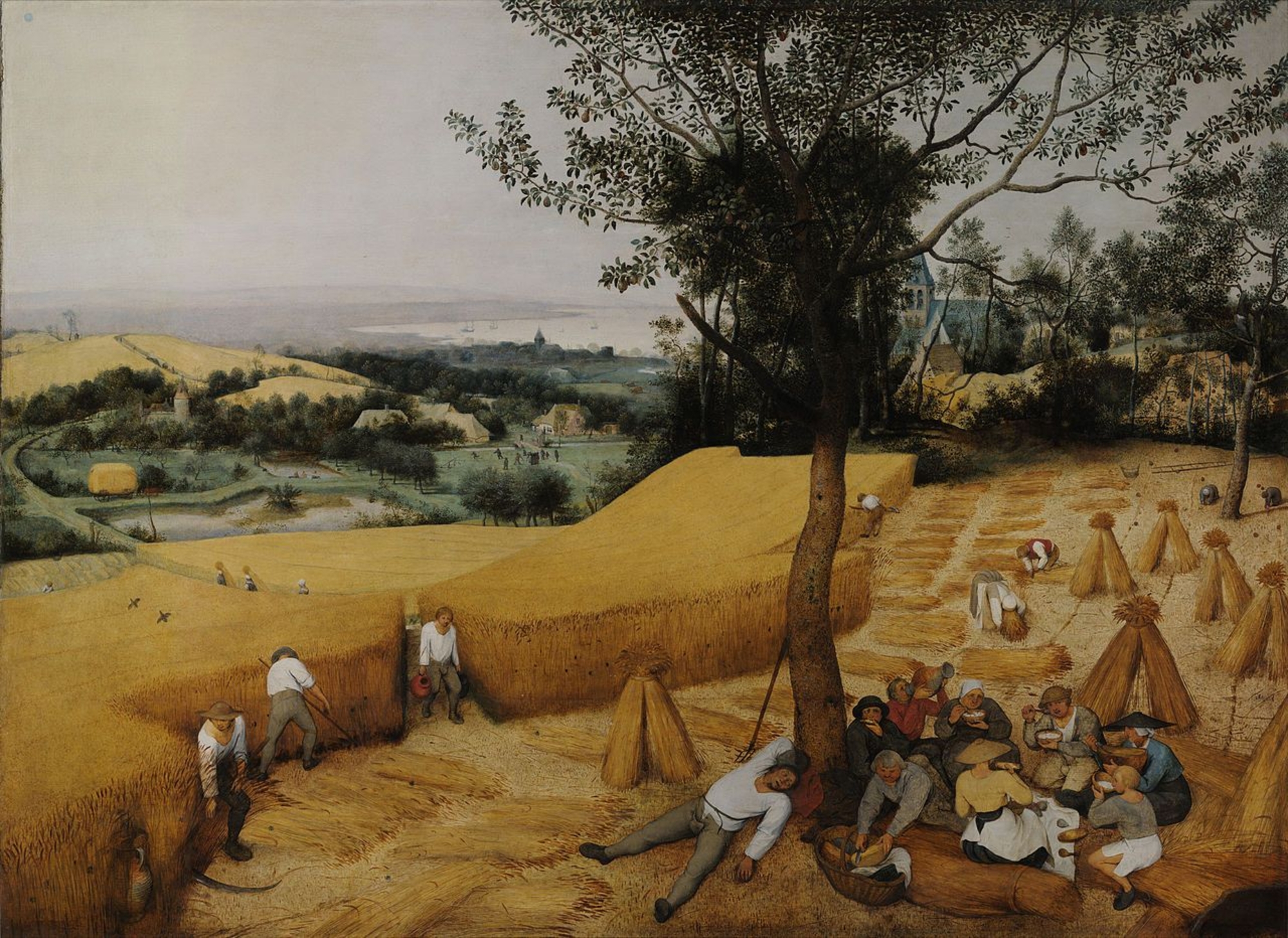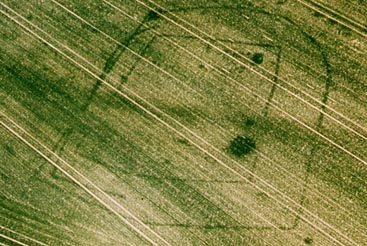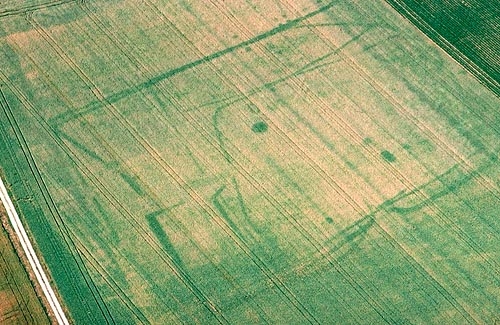- Home
- Discoveries
- Gallic settlements
- The aedeficia
At several places in his Gallic Wars, Caesar mentions aedificia as being isolated country residences beloning to the Gallic nobility. He presents these aedificia as a type of dwelling, characteristic of all of Gaul, from Brittany to the Rhine.
It is noteworthy that Caesar uses this word without ever using the term "hut" (tugurium) or "cottage" (casa). These aedificia were not simple isolated habitations, but elaborate groups of buildings. He specifies that they are nearly all located in forests "for the purpose of avoiding heat". Any farmer will tell you that the best place to avoid the heat is not in the middle of the forest (where the air circulates poorly), but behind a simple row of trees. This makes us think that these farms were probably ringed with rows of trees, a bit like isolated farms today in Normandy and Picardy.
Large nested enclosures of an native farm with an entrance en touche de palmer. Pont-de-Metz (Somme).
Large native farm with sub-rectilinear enclosure. Neuville-lès-Loeuilly (Somme).
Fifty years ago, no isolated rural complex had been discovered in northern France. What appearance could these large farms of the local landed aristocracy have had that we only know about them from ancient sources? How could we have hoped to find and identify them from the air? The key came from observing modern rural life…



